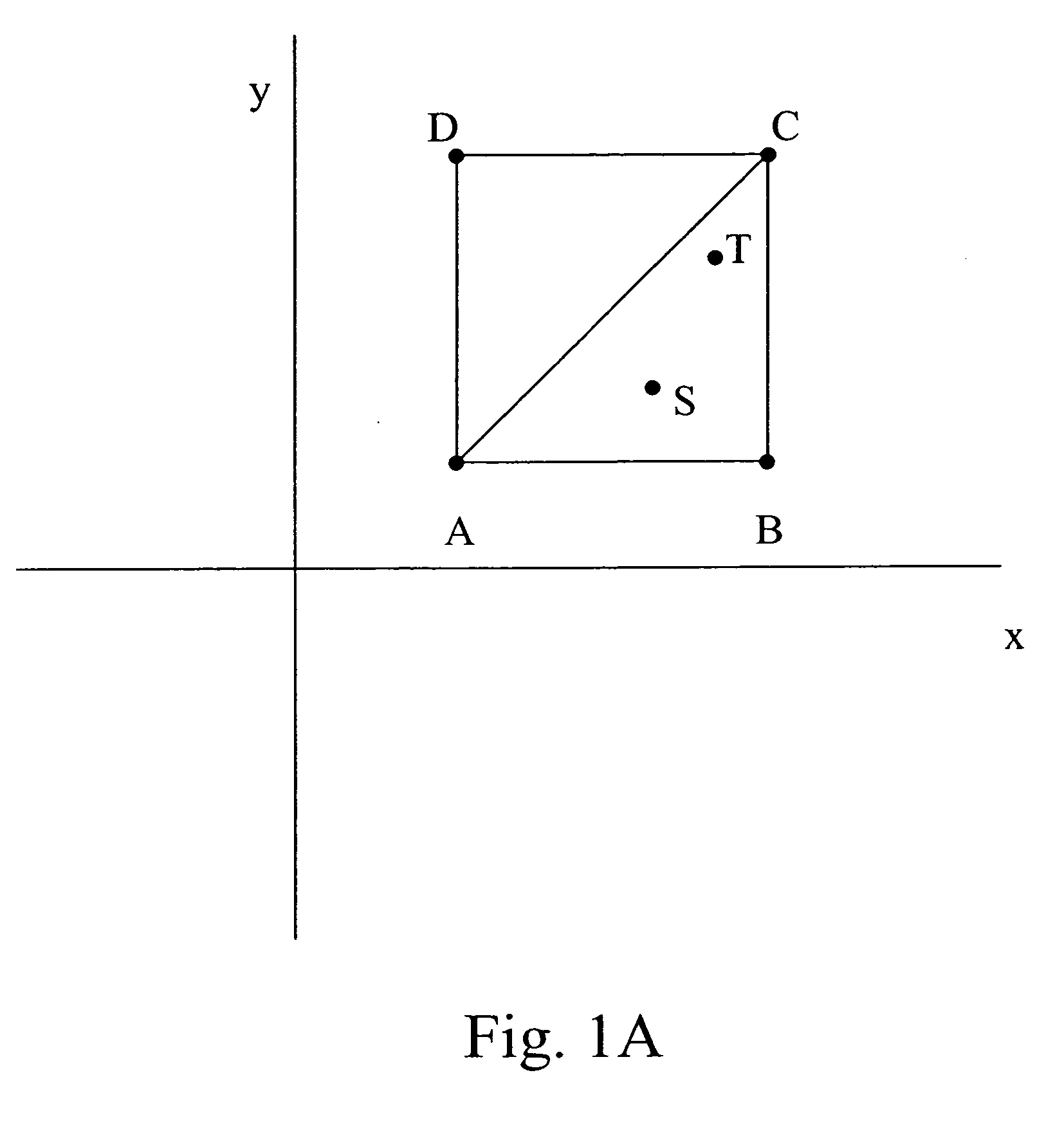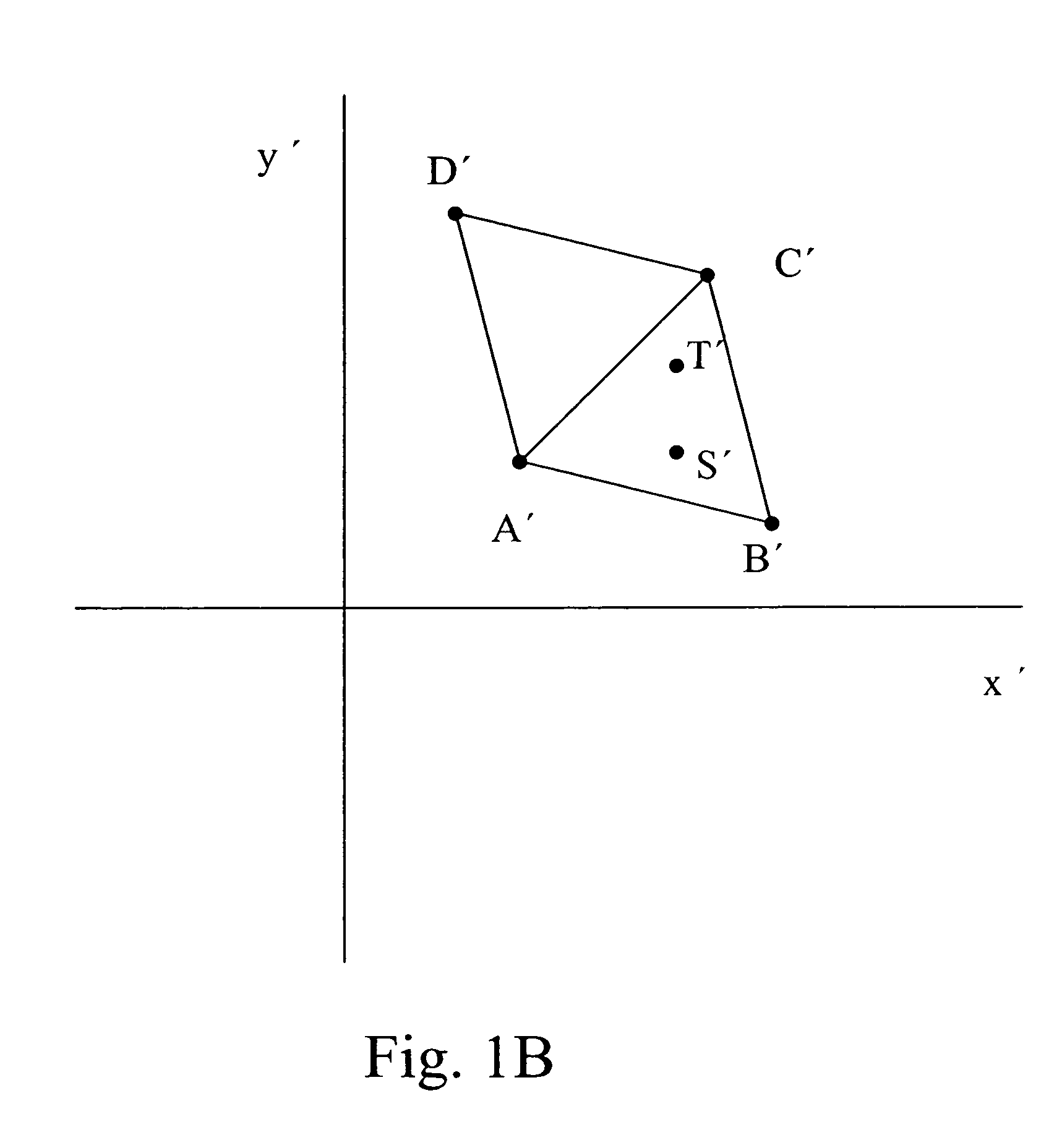CMYK printers in particular
pose a challenge when producing a color transform.
However, in the case of an inkjet printer, which places discrete drops of CMYK inks on a page, different combinations of CMYK code values can produce the same color, but appear much different in graininess or
noise when viewed by a human observer.
Thus, certain CMYK code value combinations might produce visible patterns having an undesirable grainy appearance, while other CMYK code value combinations can produce the same (or nearly) color, but not appear as grainy.
An additional complication with producing color transform for inkjet printers is that image artifacts can typically result from using too much ink.
These image artifacts degrade the
image quality, and can result in an unacceptable print.
Bleeding is characterized by an undesirable mixing of colorants along a boundary between printed areas of different colorants.
The mixing of the colorants results in poor edge sharpness, which degrades the
image quality.
Cockling is characterized by a warping or deformation of the
receiver that can occur when printing excessive amounts of colorant.
In severe cases, the
receiver can warp to such an extent as to interfere with the mechanical motions of the printer, potentially causing damage to the printer.
Coalescence refers to undesired density or tonal variations that arise when ink pools together on the page, and can give the print a grainy appearance, thus degrading the
image quality.
Therefore, using excessive colorant not only introduces the possibility of the above described image artifacts occurring, but is also a waste of colorant.
This is disadvantageous, since the user will obtain fewer prints from a given quantity of colorant.
Generally, the amount of colorant needed to cause image artifacts (and therefore be considered excessive) is
receiver, colorant, and printer technology dependent.
The prior art techniques for total colorant amount limiting work well for many inkjet printers, but are disadvantaged when applied to state of the art inkjet printers that use other than the standard set of CMYK inks.
However, many tools for producing ICC profiles cannot be used to produce a profile that directly addresses all six color channels of the inkjet printer, due to the complex mathematics involved.
While this and similar methods provide a way for current
ICC profile generation tools to be used with CMYKcm printers, the amount of colorant that gets placed on the page as a function of the CMYK code value is typically highly nonlinear and possibly non-monotonic as well.
This produces a problem when using the prior art
ICC profile generation tools, since they all assume that the amount of colorant that is printed is proportional to the CMYK code value.
Thus, when building an inverse device model and an
ICC profile for a CMYKcm printer using prior art tools, the total colorant amount limiting is often quite inaccurate, resulting in poor image quality.
Prior art processes that utilize UCR approaches to direct the use of black in the printing process are not suitable for
color printing process that utilize alternative colorants such as CMYK in addition to orange (O) and green (G).
However, this process has many limitations when it comes to building a colorimetric inverse device model.
The UCR strategy has a tendency to reduce the
gamut of the
color printing device as well as limiting certain colorant combinations from ever being formed.
As previously recognized, the conversion from the 3-dimensional color space such as CIELAB to DDCS colorant control signals such as CMYK represents and ill-posed mathematical problem (i.e., there can exist many CMYK values that map to a single CIELAB point).
The ill-posed nature of the problem increases when two extra dimensions are added to the problem, namely orange (O) and green (G) colorants.
Under color removal processes that direct the usage of black are no longer suitable to reduce the dimensionality of the inverse model
generation process to a 3-to-3 dimensional problem.
As such, this represents a limitation of a UCR-like approach for more than four colorant inverse device-modeling processes.
In general, any mapping from a m-dimensional color space to a n-dimensional colorant
control signal space, where n is greater than m, represents an ill-posed problem.
For cases where n is greater than four, methods designed after a UCR-like process that try and fix the amount of one colorant according to a set of rules to reduce the dimensionality of the process to a 3-to-3 dimensional conversion do not work.
Rozzi considers the cases of zero solutions and of exactly one solution, but fails to deal with the problem of when there is more than one solution.
This is a limitation of the Rozzi process.
Yet another limitation of the Rozzi process is in how it deals with the infinite set of possible colorant control values for a given color.
This makes selection of the optimal point from the independent set of points problematic.
 Login to View More
Login to View More  Login to View More
Login to View More 


